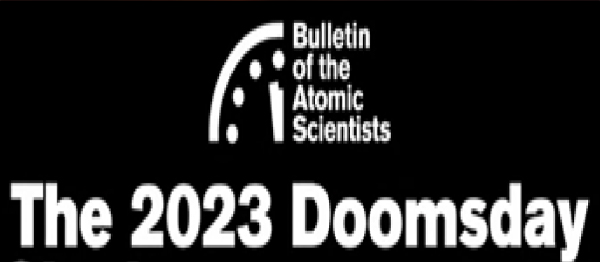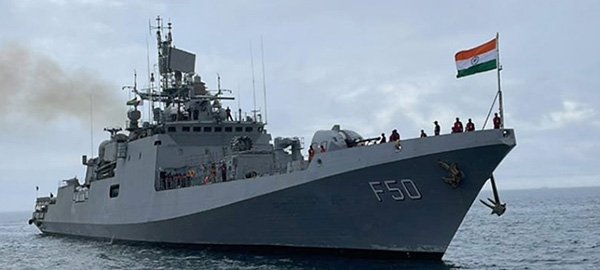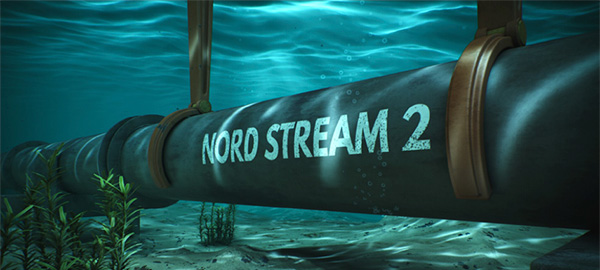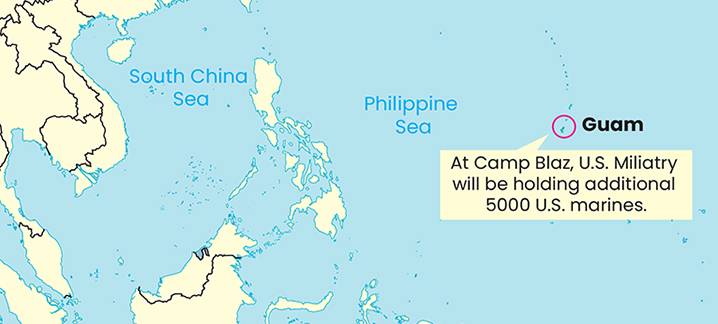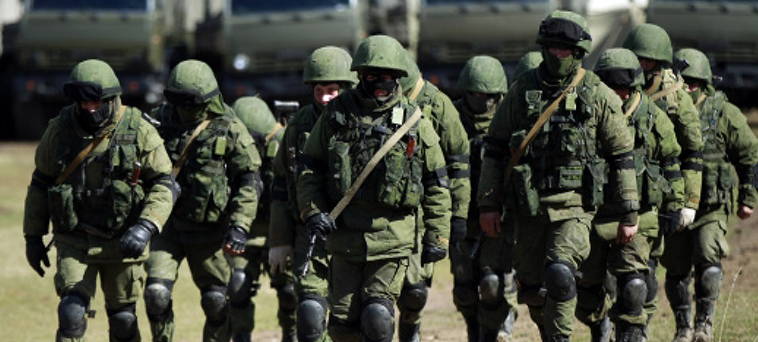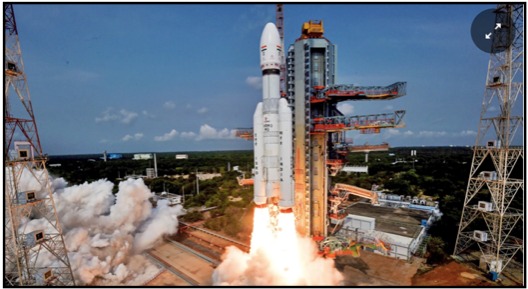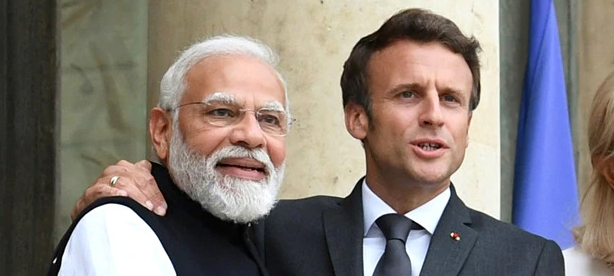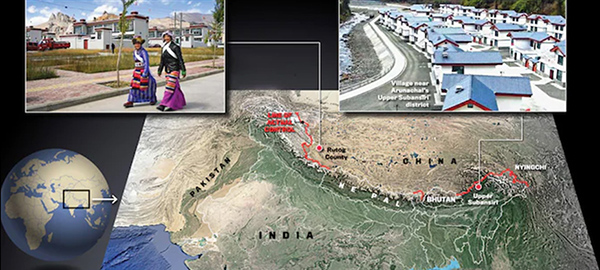(Understanding in Backdrop of Russia-Ukraine War)
“At the beginning of 2023, the total nuclear stockpile of nine nuclear states have the collective destructive power of more than 1,35,000 Hiroshima bombs.”
Today the world is witnessing unprecedented nuclear escalation since the end of the cold war in 1991. The increased risk of nuclear escalation is stemming every passing day during ongoing Russia-Ukraine conflict. The war has also brought the risk of widespread release of radioactive materials from Chernobyl and Zaporizhzhia nuclear reactor sites, violating all international protocols.The nuclear weapons treaty between Russia and the United States, ‘New START’ treaty has not been renewed and scheduled to expire in February 2026. North Korea has also resumed its nuclear rhetoric, and even launching an intermediate-range ballistic missile test over Japan last year. Iran is doubling down in its effort to go nuclear.
The latest reports of Nuclear Weapons Ban Monitor watchdog by Norwegian People’s Aid (NPA) has come out in March 2023. It revels that the a combined inventory of all nuclear states are 12,512 nuclear warheads, of which 2,936 are retired and awaiting dismantlement. The remaining 9,576 nuclear warheads are available for use by the military, and have a collective India Pakistan Israel North Korea U.S. Russia China UK France 5,428 5,977 350 225 290 160 165 90 20 Founded 1939 destructive power of more than 1,35,000 Hiroshima bombs. In 2022, the world’s stockpile was 9,440, which increased to 9,576 at the beginning of 2023. Thus, an increase of 136 warheads.
To understand the nuclear aspects of todays contemporary world, we must go through all aspects and how it has been proliferated in todays geopolitical dimensions and being leveraged for both domination and balancing act.
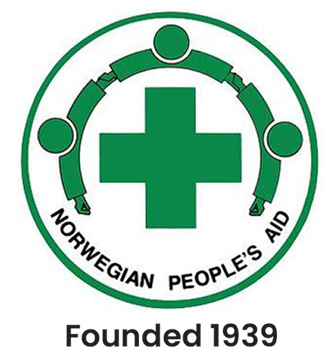
The Beginning of the Nuclear Era
During the fag ends of Second World War (01 Sep 1939 to 02 Sep 1945) the United States launched the ‘Nuclear Arms Race’ on 16th July 1945 when it detonated a 20-kiloton atomic bomb code named “Trinity” at Alamogordo, New Mexico. The Manhattan Project of U.S. was massive project to build the first atomic bomb.
The Alamogordo test demonstrated the destructive power of the explosion’s effects, but it failed to provide a meaningful comprehension of radioactive nuclear fallout, which was not well understood by project scientists until it was dropped after 21 days later on Japan on pretext of ending the great war in its (U.S.) favour.
United States dropped two atomic bombs, one called “Little Boy” on Hiroshima on 6th August 1945 and after three days on 9th August 1945, bomb called “Fat Man” on Nagasaki. Together these two bombs killed 2,20,000 Japanese citizens outrightly, with over 2,00,000 more died subsequently from lethal radiation overdoses.
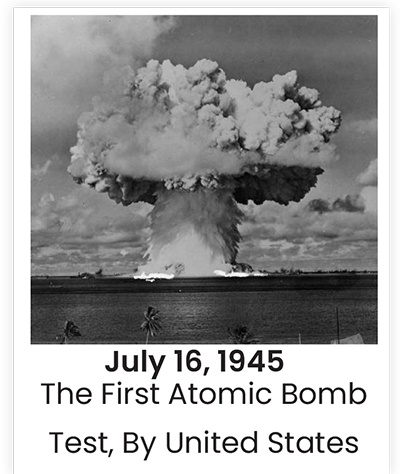
Decision to Drop the Atomic Bomb
The Japanese bombing of Pearl Harbor on 7th December 1941, brought the United States officially into World War II. In the surprise attack, Japan sunk several ships, destroyed hundreds of planes and ended thousands of lives. The Japanese goal was to cripple the U.S. Pacific fleet, and they nearly succeeded. President Franklin Roosevelt called the attack “a day which will live in infamy”. The American people were shocked and angered. The First Atomic Bomb Test, By United States July 16, 1945 After President Roosevelt died on April 12th, 1945, it became President Harry S Truman’s job to decide how to end the Second World War.
The war had shown that the Japanese were fighting for the Emperor who convinced them that it was better to die than surrender. Women and children were taught how to kill with basic weapons. Japanese Kamikaze pilots could turn planes into guided missiles and started suicidal attacks.
33rd President of USA, Harry S Truman had learned about the Manhattan Project, a secret scientific effort to create an atomic bomb. After a successful test of the Nuclear weapon on 16th July 1945, President Truman issued the Potsdam Declaration demanding the unconditional surrender of the Japanese government, warning of “prompt and utter destruction”.
Eleven days later, on 6th August, 1945, having received no reply, Present Truman decided to launch Atom bombs and force Japan to surrender and end the war. An American bomber called the ‘Enola Gay’ left the Tinian Island in route towards Japan. In the belly of the bomber was “Little Boy”, an atomic bomb. At 8:15 AM, Hiroshima time, “Little Boy” was dropped. The result was approximately 80,000 deaths in just the first few minutes. Thousands died later from radiation sickness. On 9th August, 1945, another bomber was in route to Japan, only this time they were heading for Nagasaki with “Fat Man”, another atomic bomb. After the first minute of dropping “Fat Man”. 39,000 men, women and children were killed and 25,000 more were injured.
Both cities were levelled and this forced Japan to surrender to the United States. The war was finally over. Today, world continue to debate this decision and discuss, was there another way to end the war.
The Arms (Nuclear) Race
After the Second World War, the arms race started between the two newly emerging superpowers United States and Russia. Between 1946 and 1949, the United States conducted six more nuclear tests. On 29 August 1949, the Soviet Union tested its first atomic bomb, ‘RDS-1’ or ’Joe 1’. This test marked the beginning of the “Cold War” and the nuclear arms race between the two superpowers.
The United Kingdom became the third country to test nuclear weapons on 3rd October 1952. Initially, the United Kingdom tested in Australia and later on in the United States.
On 1st November 1952, the United States became the first country to test a ‘Hydrogen bomb’. The ‘Castle Bravo’ test on 1st March, 1954 yielded 15 Megatons TNT equivalents (Energy units). From 1955 to 1989, the average number of nuclear tests conducted every year was 55. In 1962, during and after Cuban Nuclear Crisis between U.S. and Soviet Union alone saw as many as 178 tests. 96 tests were conducted by the United States and 79 by the Soviet Union. The preceding year had seen the testing of the largest nuclear weapon ever exploded, the Soviet Union’s “Tsar Bomba” with an estimated yield of 50 Megatons. It was tested at the Novaya Zemlya test site near the Arctic Circle.
France became the fourth nuclear state in 1960. France initially tested in Algeria, and later on in the South Pacific. The 1963 Partial Test Ban Treaty banned nuclear testing for military and for peaceful purposes, in the atmosphere, underwater and in space but not underground. China became fifth nuclear state in 1964. It conducted all its nuclear tests at Lop Nur in Xinjiang Province.
According to the Nuclear Threat Initiative, Israel initiated a nuclear programme in the 1950s, and had completed the R&D phase of its nuclear weapon programme in 1966, although it has not, to public knowledge, tested such a weapon. Israel has not officially declared itself as nuclear state.
India became the sixth nation to develop nuclear capabilities. On May, 1974, it conducted a nuclear test and declared it as a peaceful nuclear explosion.
In 1982, South Africa acquired nuclear weapons, according to the ‘Monterey Institute on non-proliferation studies’. In public knowledge, South Africa did not conduct any nuclear tests. Less than ten years later, with the anticipated transition to a majority-elected government, South Africa dismantled all of its nuclear weapons, the only nation till date that has voluntarily relinquished the nuclear arms under its control. The dismantling was completed in 1991. The same year, South Africa acceded to the 1968 Non-Proliferation Treaty as a Non-Nuclear Weapon State.
The world’s nuclear arsenals ballooned throughout the Cold War, from 3,000 weapons in 1955 to over 37,000 weapons by 1965 (United States 31,000 and the Soviet Union 6,000), to 47,000 by 1975 (United States 27,000 and Soviet Union 20,000), and over 60,000 in the late 1980s (United States 23,000 and the Soviet Union 39,000). The Soviet Union conducted the last nuclear test on 24th October 1990, the United Kingdom on 26th November 1991 and the United States on 23rd September 1992.
In 1990, the Soviet Union proposed a moratorium on nuclear testing that was agreed by the United Kingdom and the United States. Soviet Union got disintegrated in 1991.
France closed and dismantled all its nuclear test sites in the 1990s. Belarus, Kazakhstan and Ukraine had hosted the Soviet nuclear arsenal, became non-nuclear weapon states under the Non-Proliferation Treaty in 1992 after signing Lisbon protocol. The USSR’s main test site, Semipalatinsk in Kazakhstan, was closed in 1991.
India conducted two underground nuclear tests, code named “Shakti 98”, on 11th and 13th May 1998 at its Pokhran underground testing site. In contrast to India’s initial nuclear test in 1974, this time there were no claims that these were for “peaceful purpose”. On the contrary, government officials were quick to emphasise the military nature of the explosions.
A scant two weeks later in 1998, Pakistan reacted, conducting two underground nuclear tests at its Raskoh range.
Both India and Pakistan immediately moved to announce unilateral moratoriums on nuclear testing and have conducted no nuclear tests since 1998.
The North Korea conducted nuclear test on 9th October 2006 and became the ninth nuclear state.This was followed by five more tests in 2009, 2013, two in 2016, and 2017. Iran would be tenth nuclear state, as it is in final stages of going nuclear.
Global Nuclear Arsenal as on March 2023
Every year, the global inventory of nuclear warheads decreases slightly, including in year 2022, when it decreased from 12,705 warheads at the beginning of the year to the estimated 12,512 warheads in January 2023. But, this is only true because Russia and the United States, each year dismantle a small number of their older nuclear warheads that have been retired from service. There are some countries who are still expanding their stockpiles of warheads, bringing about a corresponding increase of 136 warheads also in the global total of stockpiled warheads available for use by the military. This increase is worrying, and continues a trend that started in 2017. If this does not stop, we will soon see an increase also in the total number of nuclear weapons in the world for the first time since the Cold War.
The combined total of Russia, United States, United Kingdom, France, China, India, Pakistan, Israel and North Korea possess an estimated total of roughly 13,000 nuclear weapons. The exact holding of active nuclear weapons of nine countries and five more European countries where United States’ nuclear weapons are deployed are shown below graphically.
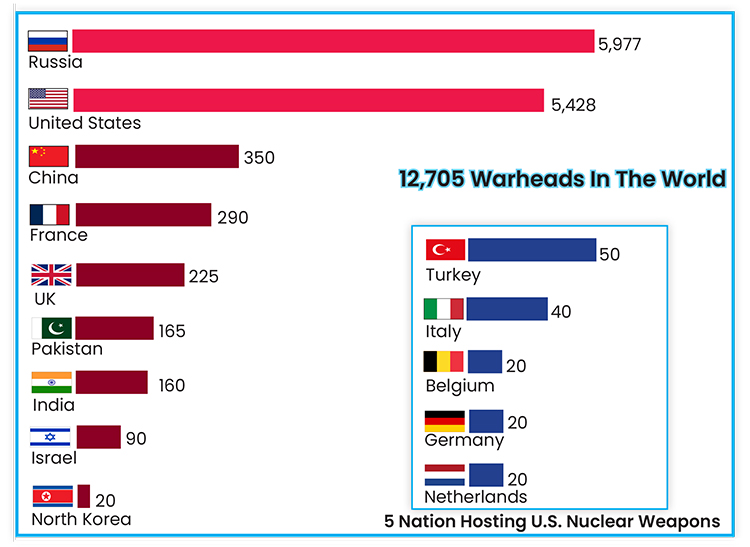
Russian President Vladimir Putin recently ramped up nuclear tensions by announcing that Russia would be deploying “tactical” nuclear weapons in Belarus on the NATO’s border. He justified the move by pointing out to the presence of United States nuclear weapons in Belgium, Germany, Italy, The Netherlands and Turkey.
The false narrative, “nuclear weapons are strategic weapon which is more to be used for counter balancing for world peace”, has been exposed. The Ukraine crisis has demonstrated that nuclear weapons do not create peace and stability. They don’t deter aggression, but enable conventional wars and incentives risk-taking that could lead to nuclear war. The same was seen when Pakistan launched Kargil war in 1999, after going nuclear in 1998.
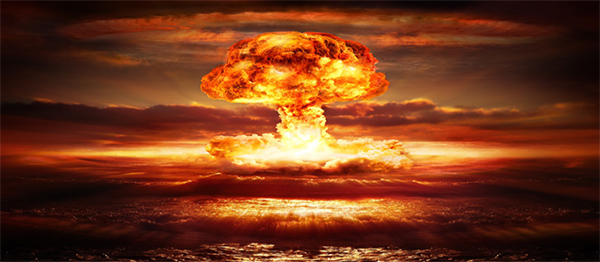
The world at large is on self-destruction path. More and more countries either inspire to posses nuclear weapon like Iran or get into a nuclear umbrella like 31 NATO countries in which Finland joins recently. Even countries like Japan who has suffered the nuclear catastrophe, also looking for a nuclear alternative.
The “Doomsday Clock” created by the Bulletin of the Atomic Scientists to illustrate how close humanity has come to the end of the world, moved its “time” in 2023 to 90 seconds to midnight, 10 seconds closer than it has been for the past three years. Midnight on this clock marks the theoretical point of annihilation.
